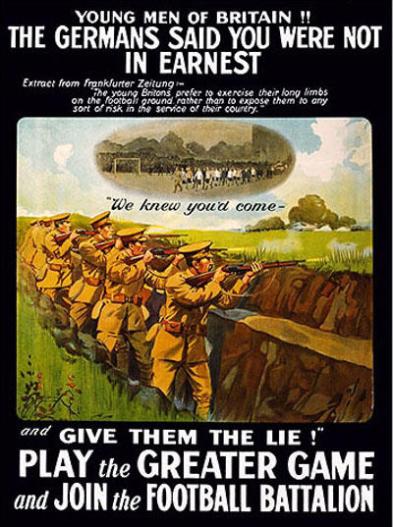Having enlisted in December 1914, Norman made the decision to join the ranks, (a decision discussed in the previous blog), one to which the Aldenham headmaster credited to his “extreme modesty.” He spent a year in training in England: travelling between Kempton Park Racecourse, Warlingham, joining the 100th Brigade at Slipstone Camp in July 2015 and then at Perham Down for final training in August.
The ‘Public Schools Battalion’ finally landed on the Western Front in 17th November 1915, serving primarily around Morbecque. By February they were transferred to General Headquarters, before going back to the frontline with the 29th division on the 25th April. Dick however had been awarded his stripe in April 1916, transferring to a cadet battalion at Gales, Ayrshire. It was perhaps a fortunate transfer, as the 16th were to be heavily involved at the battle of the Somme. Four months in Scotland was broken by a transfer to the 6th Middlesex, in Chatham. A life in the barracks, whilst safe, was “utterly distasteful to him, as was staff work later, and he longed for active service.”
He was to see it later in 1916, having transferred back to the 17th Middlesex, the “Footballers Battalion,” also known as the “die hards.” Some of his fellow officers there would have included: Captain Edward Bell, former star forward for Southampton and Portsmouth, Lt Vivian Woodward who had competed in the Olympic Games in 1908 & 1912, and Walter Tull of Tottenham and Northampton Town who was to become the first Black commissioned officer in the British Army. So noteworthy was the battalion that their exploits were reported in newspapers back home. They also, somewhat unsurprisingly were the victors in the divisional football tournament, beating the Royal Field Artillery 4-3 in the final. (For more on the football battalion see https://www.britishlegion.org.uk/community/stories/remembrance/sport-remembers-how-the-football-battalions-kicked-off-their-war/)
Despite being situated on the frontline and seeing “heavy fighting” he continued to write “cheerily, and with a whimsical humour always.” The schoolmasters thoughts were also never far from home, and the summer term to come. On 25th April in a letter to the school “By the time you get this, you will probably be back at Aldenham. Give my love to all there: I think of them very often.”
Sadly this was one of the last letters he was to write. The Battalion had been serving as frontline reliefs, when he and a portion of his regiment were surrounded by a much larger force. He was reported wounded and missing on 28th April. Hope remained for a number of days of capture, however he had (according to a fellow officer) been hit by a German Sniper and “never moved after he fell.” There is, ‘The Albanian’ reported, at least some comfort perhaps in the swiftness of death “he could not have suffered much.”
Whilst the Battalion has its own memorial (dedicated in 2010 at Longueval, France) The Schoolmaster is also remembered on the memorial at Arras, alongside four former Aldenham pupils:
- Arthur Rupert Poggi (B1908-13), served with The King’s (Liverpool Regiment) and was killed on 24/03/1918 aged 20
- Harold Toulmin (M1910-13), served with the Royal Fusiliers and was killed on 17/09/1918 aged 21
- Frederick Kenneth Jackson Trayes, served with the Cheshire Regiment and was killed on 23/03/1918 aged 20
- Geoffrey Wilson served in the Army Training Services Corps and in the Royal Airforce, 209th Squadron, was killed on 15/05/1918 aged 23 and is commemorated on the Arras Flying Services Memorial
He was much missed back home, as can be seen in the commemoration he was offered by a grateful community. Aldenham school honoured him with an Obituary in the July 1917 school magazine ‘The Aldenhamian’. He is also remembered on the war memorial in Aldenham Church & also recorded on the memorial board at Merchants Taylors School.

The School Memorial Library was also constructed in 1924, and is described on Warmemorialsonline.org.uk as:
“Commemorating 160 Fallen Old Boys [since WW1], the Memorial Library at Aldenham School was opened in 1924 by Lord Buckmaster. Under the guidance of CA Stott it became a model School Library, gaining national recognition. As a tribute to the 100th anniversary of the outbreak of World War 1, pupils and staff at the school created 160 ceramic poppies which formed a display on the outside of the building.”
That he should be remembered best at the library is perhaps the most lasting and fitting legacy to this scholarly Saracen. Aldenham’s Headmaster described his legacy in the Eulogy, delivered to a grieving school in July 1917. “A Loyal adopted son of Aldenham: May we from his example learn to bear ourselves like true men, one and all.“
All major references from The Aldenhamiam, July 1917, p.64-65









Pingback: Finding Our Fallen Saracens….Touring the Battlefield Cemeteries 2018 | Saracens Rugby Club and W.W.1